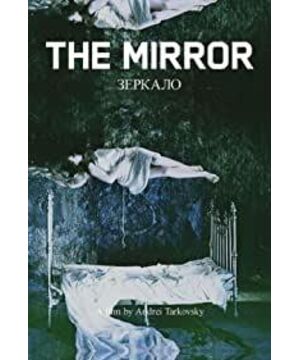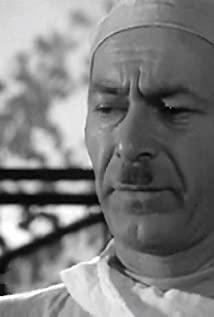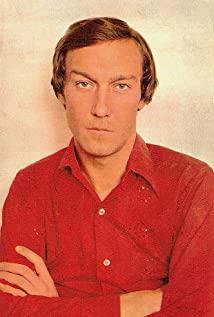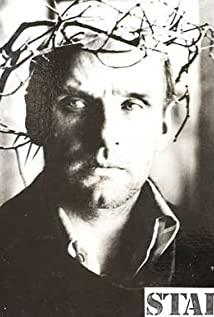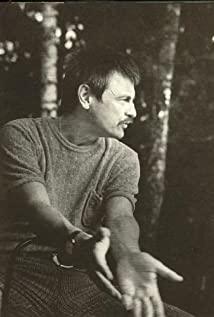——Paul Celan's "Secret of the Fern"
There is no doubt that, like all human beings, the artist is in an extremely embarrassing era. It's just that for most ordinary people, they don't realize the embarrassment of their existence (and even if they do, they don't necessarily know what that feeling actually is). From a general point of view, embarrassment itself is everywhere, but there is a wide-ranging, warning voice from predecessors that tells us that embarrassment mostly stems from the rupture between human will and reality. Intention can be said to be the basic psychological driving force for human existence and development, but at the same time, it is also the thing farthest from the Platonic idea of things. Because intentions will have absolute control over intelligence and ability, so that people will lose the ability to intuitively understand things. This lack of ability will inevitably cause people to misunderstand life and make them think that they can follow the utilitarian methodology to the end. But he was bitten by another pair of sharp teeth above reality. Schopenhauer's philosophy places great emphasis on the concept of "intuition", and he himself believes that whether cognitive ability is manipulated or not is the key to distinguishing mortals from geniuses - "We often see in the works of geniuses It is not intentional, purposeless, or even partly unconscious and intuitive, because the original artistic cognition is completely detached and independent of will, a cognition without will.”
These words have to remind me of Russian director Andrei Tarkovsky and his masterpiece "Mirror". As the greatest Russian director since Eisenstein, and the man who "held the key to a room he could never enter" in the words of the Swedish film master Bergman, Tarkovsky has a very unique film aesthetic and strong The personal vision of the self is the absolute dictator in the world of light and shadow of the self. In fact, in the palace of world-class directors, Tarkovsky's readability has long exceeded that of a film author, and it has become a phenomenon, opening up several paths leading to various artistic conceptions. Take Mirror, for example, an autobiographical work about an artist's childhood experiences and growth. The language of the pictures is extremely symbolism, and the structure completely rejects the linear narrative, but has an unparalleled poetic temperament. Its formation is more based on intuitive experience, experience and personal feelings, and abandons the role of "intellect". In this film, only direct and pure face to the senses of nature and spirit is meaningful.
Tarkovsky himself believed that art must never take the interaction between concepts as the ultimate goal. The image is a concrete object, but it extends along the mysterious path to the area beyond the spirit. The Platonic idea achieved by this pure cognition mainly exists in three levels of expression in The Mirror. They are: capturing meaning from ordinary details and moments in life, expressing solemnity to nature and people Follow the gaze, and the narration of the somber and beautiful poetry. The film begins with a TV image of a boy who is hypnotized for stuttering, then cuts to the back of a woman sitting on a fence smoking a stutter and watching the distant back after the opening credits, followed by a black cat licking a puddle of milk, the child's The pages of the book with hands constantly flipping, the wooden house on fire, a bird smashed through the corner of the window glass and flew out, the glass bottle rolled off the table, the room that was raining and collapsed, the mother's aging moment in the mirror, the wooden table slowly The disappearing fog marks, the boy standing under the dead wood in the snow grabbed the bird parked on his felt hat. These pictures all present a contemplative essence, a purely representational world completely separated from the world of will, in other words, they are not associated with any actual value or use, but can be used in the context of thought. There are endless directions. They are moments of truth that are ignored out of "uselessness", and this truth is given an aesthetic meaning in the composition and lighting of the picture. Tarkovsky sings it all out, and his approach is not a one-size-fits-all set of shots, but a plethora of push-pull shots and ingenious railcar movement. The gaze in his cinematic language is distinctive, the movement and focus of the lens has a hazy and unconscious quality, a childlike naive and aimless perspective. For example, the camera focuses on the bushes where the wind is blowing for a long time; or it moves smoothly from the child eating to the mother in a daze, and moves with the mother to the window with the withered bouquet, and from the window to the tin can that is beaten by the rain outside; Or swaying slowly in a dilapidated room, then walking along the corridor to the blue curtains at the end; or zooming away from the close-up of the flower belly bottle on the stage, and suddenly turning the focus to the child running behind. The unknowability of these scenes and long-shot scheduling, as well as the special state of cross-border, neutralization, and informality, together create the two most important factors in Ta's films-dream and memory.
Likewise, what makes this film among the most obscure films is its complex structure. It can be roughly divided into the two basic clues of the creator's childhood memories and current experience, but interspersed with many dreams and illusions, as well as news documentaries, constructing the reality of the times on top of personal experience, forming a new time-space connection . For Tarkovsky, art can recreate time, and memory allows life to revisit the past. Not being bound by linear order is also the embodiment of Tarkovsky's intuitive idea of things. To see an object in its purest form, we must ignore its place in time and space, that is, focus on its individuality. This is because this object can become an idea only when time and space - which are the subjective and formal conditions of our cognition - are taken away. That's why Bergman says that Tarkovsky "created a language that is true to the nature of cinema," a principle he always adheres to is a pure connection to life.
In addition to the divinity in the spiritual dimension, to a certain extent, the aesthetic ideas shown by Tarkovsky in the film often have a painful fragmentation and decay. Tarkovsky cherished the weak, especially children, women and madmen, and he believed that madness after suffering was precisely the advanced form of the spirit. He prefers to explore scarred, indecisive beings to bodies full of confident power. This should be in line with Baudelaire's view that "beauty is associated with melancholy, misfortune, and the absence of ideals". In Tarkovsky's eyes, personal knowledge and energy are insignificant. Like a devout monk, he firmly believes that only faith determines the meaning of life. Only through sacrifice and suffering can mankind be saved and reborn.
Ordinary people are immersed in a tumultuous, tumultuous life to which they belong because of their will, and their minds are full of the things and events of life, but they are not at all aware of these things, or even the objectivity of life. meaning. Tarkovsky, on the other hand, stared at the earth, the rain, the burning bushes, the silence and loneliness of mankind with broad and profound eyes. In the long corridor of art, he has reached the end of mankind like a martyr in the film, and then slowly, slowly, turned around.
View more about Mirror reviews


